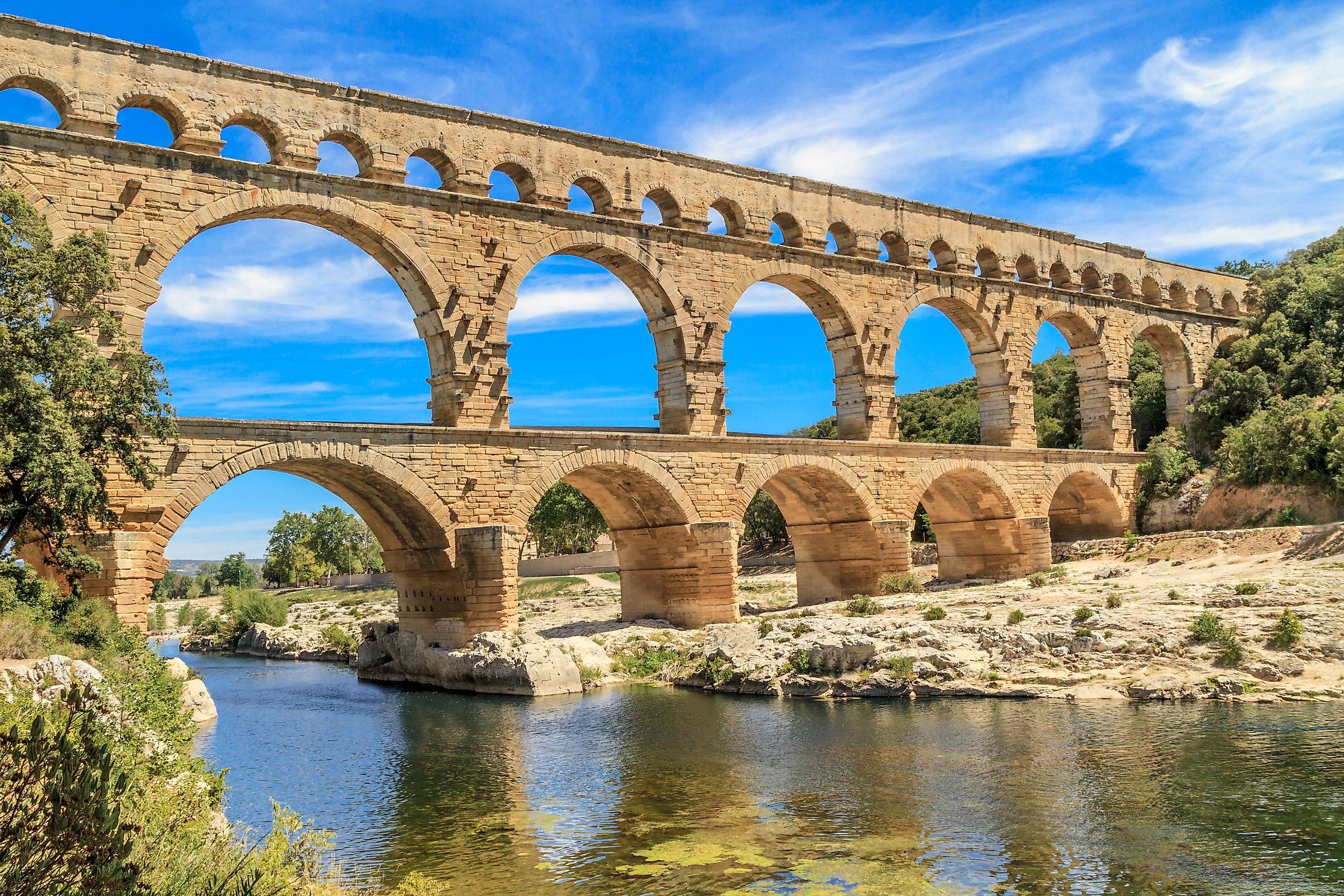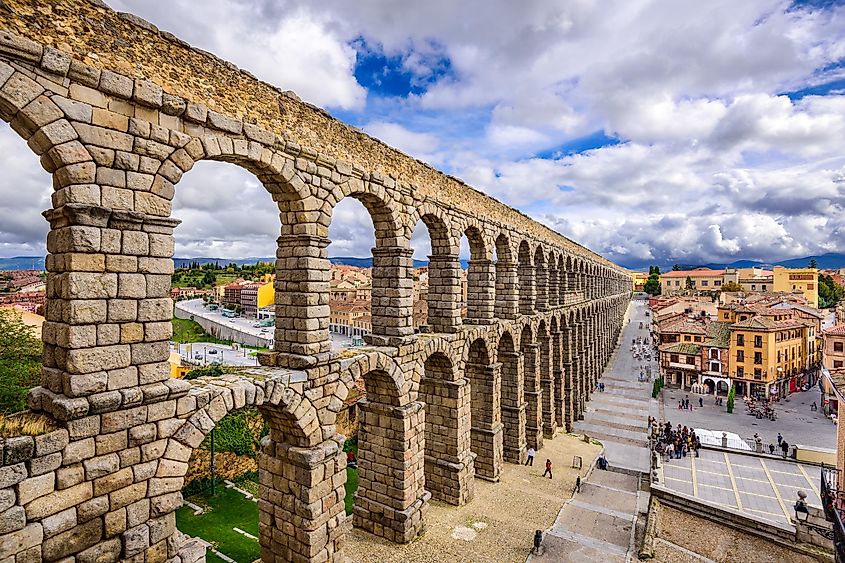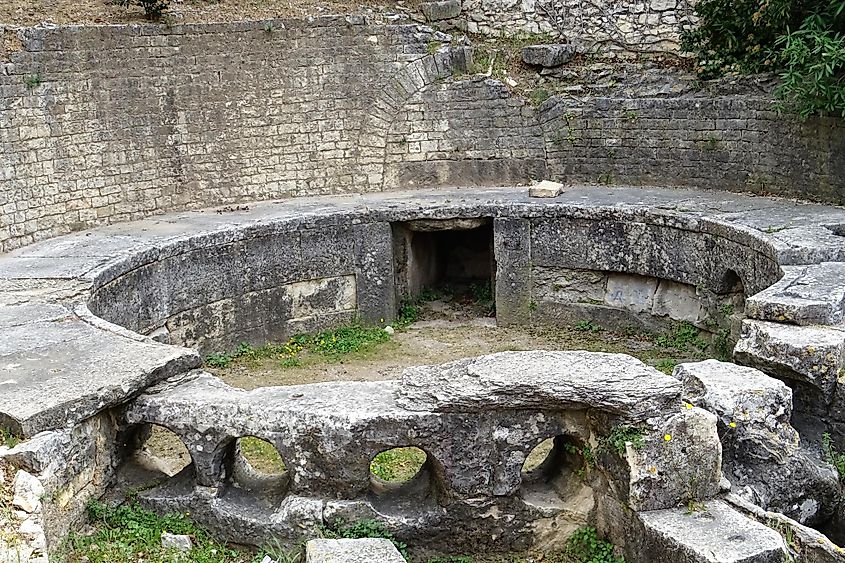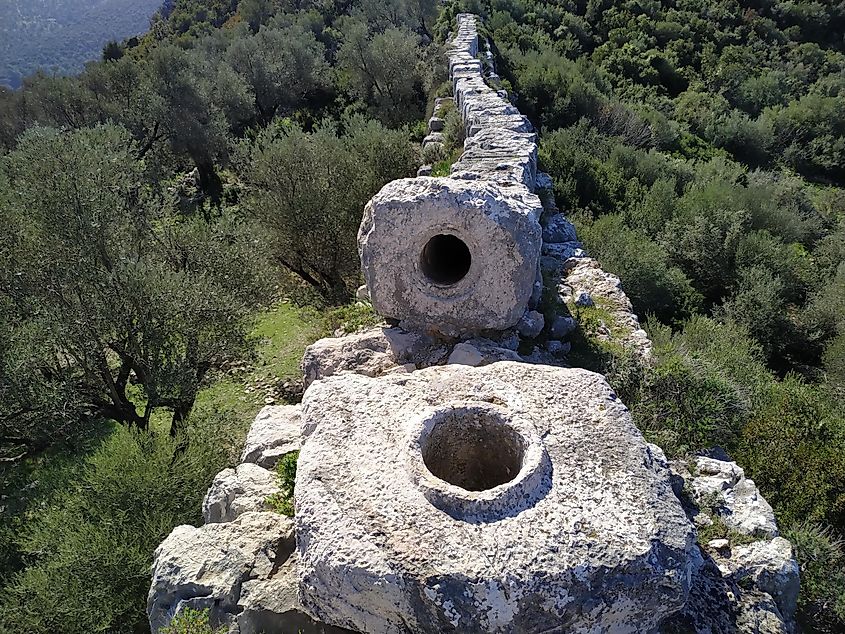
How Did Ancient Romans Build Aqueducts?
Many people celebrate the ancient Romans for their inventions. When examples of their inventions come up, aqueducts are usually among them. The large structures transported water across huge distances in Rome and are among the most outstanding achievements of the ancient world. Many of the Roman aqueducts still stand today and are functioning. Considering their importance, you might be wondering how the Romans created aqueducts. Here, we will explore the creation of this famed Ancient Roman invention.
What Are Aqueducts?

Before exploring the creation of aqueducts, we need to better understand what they are. Roman aqueducts were channels that moved fresh water around the city. The channels took water from various sources and moved the water to populated areas. Some of the channels crossed different territories and were complex. The ancient Romans used specific tools to build them.
Tools
To measure the land, the Romans needed tools that could take large-scale measurements. They used tools such as groma, diptra, and chorobates. They each served a different purpose in the building process. The groma was a five-foot-long pole with horizontal crosspieces at right angles mounted to the pole. This was useful for alignment and surveyed straight lines. The dioptra was the tool used for leveling. Lastly, the chorobates ensured everything lined up correctly and indicated a surface's gradient.
Using Gravity To Their Advantage
An important feature of the aqueducts was their downward slope from lakes and springs to the pipes. Water came from springs and, in some cases, reservoirs. Building everything down from the water source lets gravity do the work by carrying the water down. To calculate where the location of the source was properly, the Romans did years of surveying, land management, and planning. They also had to ensure the pipes' slope would carry the water at the right speed. If the water traveled too quickly, the stone would wear down, and if the water traveled too slowly, the water would stagnate and be unsanitary to drink. If water traveled in an area that went uphill, the Romans sometimes used pressurized siphons. The layered arched bridges we see today were part of the aqueducts. Water ran across the top in the open air. The Romans built these arches to carry huge volumes of water.
Underground Pipes

While the remains of aqueducts are the stone arches and bridges, the Romans also had a complex underground pipe system for moving water. Building the aqueducts underground protected them against erosion. This also allowed the surrounding fields and neighborhoods to be relatively undisturbed. Building the underground system was hard work, and the Romans dug holes in the ground for the system. The holes dug out had to be lined with clay pipes to make sure the water went to the right place. Manholes were also built to allow access to the pipes if needed. The freshwater moved from the pipes to a large main tank called the castellum. Smaller pipes took water from the tank to another castellum, where water was then distributed to fountains, baths, and, for some, their home.
Materials And Manpower
To build the aqueducts, the Romans used a mixture of materials, including stone, brick, and volcanic cement called pozzolana. These materials worked to hold the pipes in place. The pozzolana is a strong substance that accounts for the aqueducts' arches standing tall today. The volcanic cement held the brick and stones together.

While building an aquifer might sound like a simple task to explain, this didn't happen overnight. In fact, constructing the aqueducts took the Romans years. The Romans made enslaved people partake in the building process. They would give them tasks like stone hauling, ditch digging, and construction work. This was back-breaking labor. Once the aqueducts were complete, the work wasn't over. They needed regular maintenance and repairs. A special valve called 'sluice gates' was sometimes added to pipes to redirect the water away from damaged pipes.
Still Standing
Even though the aqueducts from ancient Rome date back thousands of years, parts of them still stand today. This is because of the materials and advanced engineering. Some of the remains of aqueducts you can visit today in Rome include Parco di Tor Fiscale, Aqua Marcia (Reconstructed as Aqua Felix), and Aqua Virgo. The remains of aqueducts give us a window into the past to understand ancient Rome better.











